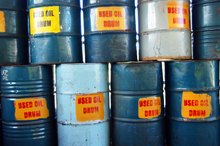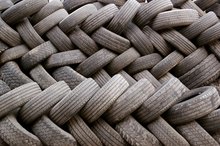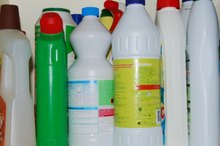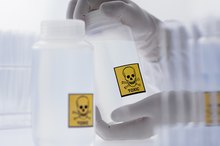Side Effects of Inhaling Bleach
Bleach is a popular household cleaner, used in kitchens, bathroom, laundry rooms and other areas of the home. Typically made of a solution containing chlorine, liquid bleach can whiten fabrics and remove mold.
And while it's great at reducing the number of germs and bacteria on surfaces, household bleach also emits fumes that can be dangerous when inhaled.
Understanding exposure
Inhaling bleach fumes can cause several health risks including damage or burning of the lining of the esophagus or lungs. That can lead to coughing, gurgling breathing sounds and trouble getting enough air. These symptoms can be mild, moderate or severe depending on the amount of exposure and your respiratory health. People with asthma, COPD and other chronic respiratory health issues may experience more exaggerated or severe symptoms and/or have a lower tolerance to bleach fumes.
What Are the Dangers of Inhaling Rubbing Alcohol?
Learn More
Fumes can also be trapped on skin that comes in direct contact with bleach. While these fumes are not typically as concentrated, they can still irritate eyes, nasal passages and the throat.
Clean skin that's come in contact with bleach with fresh lemon juice or vinegar to lessen the potency of fumes and reduce the risk of exposure.
To prevent accidental exposure to bleach fumes as well as other bleach-related injuries, never mix bleach or any product containing bleach any form of ammonia. Doing so creates a dangerous gas that can cause chronic breathing problems and even death.
To reduce your risk of a dangerous chemical reaction and over-exposure to bleach, read all labels and follow instructions when using cleaning products.
And only use bleach and products containing bleach in well-ventilated areas such as a large room, a room with an open window, outdoors, etc. Additionally, wearing a mask or respirator and safety goggles can also reduce your risk of exposure to bleach fumes, especially in small or poorly ventilated area 1s
- Inhaling bleach fumes can cause several health risks including damage or burning of the lining of the esophagus or lungs.
- To reduce your risk of a dangerous chemical reaction and over-exposure to bleach, read all labels and follow instructions when using cleaning products.
Related Articles
References
- Safety tips
- azaroff WW, Weschler CJ. Cleaning Products and Air Fresheners: Exposure to Primary and Secondary Air Pollutants. Atmospheric Environment. 38, 2004: 2841-65.
- Benzoni T, Hatcher JD. Bleach Toxicity. In: StatPearls [Internet]. 2019.
- Center for Disease Control and Prevention. Cleaning and sanitizing with bleach after an emergency. Health and Safety Concerns for All Disasters. 2017.
- Centers for Disease Control and Prevention. Infection Control: Chemical disinfectants. Updated September 18, 2016.
- Centers for Disease Control and Prevention. Cleaning and Sanitizing With Bleach After an Emergency.
- E. Rhinehart, M. Friedman, and M. McGoldrick. Infection Control in Home Care and Hospice. 2006. Association for Professionals in Infection Control and Epidemiology. Jones and Bartlett Publishers.
Writer Bio
Gina Roberts-Grey, owner of GRG Productions, Inc., is a writer specializing in celebrity profiles and Q&As, as well as health, personal finance and consumer issues articles. Her health and lifestyle articles have appeared in many print markets including AARP The Magazine, Essence, Family Circle, Glamour, Heart Healthy Living, Natural Health, Parents, Parenting, Pregnancy, Woman's Day and more.







